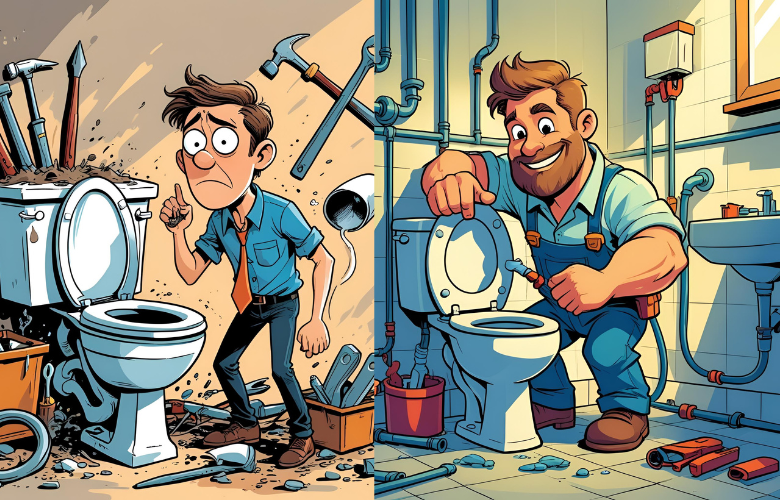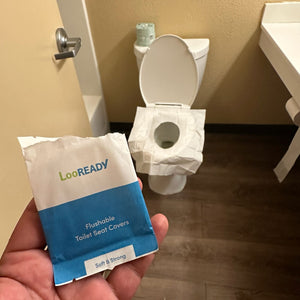Let’s face it—few things are more frustrating than walking into the bathroom only to discover a toilet blockage. It’s messy, inconvenient, and sometimes downright embarrassing, especially if it happens when guests are over or in the middle of the night. But don’t panic—whether your toilet is clogged and full of water, flushing slowly, or completely backed up, you can fix it without always needing a plumber. The good news is that many toilet clogs are caused by simple things and can be resolved with everyday tools or easy home remedies.
All you need to know about Toilet Blockage
Toilet blockage is one of the most common household plumbing issues. It usually happens when something obstructs the normal flow of waste through the pipes. Sometimes, it's just too much toilet paper. Other times, it’s non-flushable items like wipes, sanitary products, or even excessive poop that your toilet can't handle all at once. Regardless of the cause, knowing how to fix a toilet blockage can save you money, time, and stress.
In this guide, we’ll break it all down for you in plain, simple steps. Whether your toilet clogged and you don’t have a plunger, your toilet is clogged and full of water, or it keeps clogging for no clear reason, we’ll cover all the solutions—from fast tricks using dish soap and hot water to home remedies like baking soda and vinegar. We’ll also explain what causes clogs, how to prevent them, and what to do if your shower backs up at the same time. If you’re searching for a reliable toilet clog dissolver or a quick fix that doesn’t require fancy tools, this blog will help you get your bathroom back in order—without needing to call in a pro. Let’s dive in and unclog that toilet once and for all!
A clogged toilet is one of those household problems that can quickly escalate from a minor inconvenience to a major headache. Understanding how to address toilet clogs effectively is essential, whether it's a sudden blockage or a recurring issue. This comprehensive guide will walk you through various methods to tackle toilet blockages, using everyday items and straightforward techniques.
Understanding toilet blockages
Toilet blockages occur when something obstructs the flow of water and waste through the drainpipe. Common culprits include excessive toilet paper, non-flushable items, or buildup over time. Recognizing the signs early—such as slow flushing or rising water levels—can help prevent more severe issues.
Immediate actions when the toilet is clogged and full of water
If your toilet bowl is filled to the brim, avoid flushing again, as this could cause an overflow. Instead, remove excess water using a small container or cup, transferring it to a bucket. This step reduces the risk of spillage and prepares the toilet for unclogging efforts.
Unclogging without a plunger
Not having a plunger on hand doesn't mean you're out of options. Several household items can serve as effective alternatives:
1. Hot Water and Dish Soap
Pour a generous amount of dish soap into the toilet bowl, followed by a bucket of hot (not boiling) water. Let it sit for 15-20 minutes. The soap lubricates the blockage, while the hot water helps break it down. Afterward, attempt to flush the toilet.
2. Baking Soda and Vinegar
Sprinkle one cup of baking soda into the bowl, then slowly add one cup of vinegar. The chemical reaction can help dissolve the clog. Wait 30 minutes before flushing. This method is especially useful for organic blockages.
3. Wire Hanger
Straighten a wire hanger, leaving a small hook at the end. Carefully insert it into the drain to dislodge the blockage. Be gentle to avoid scratching the porcelain.
Using a plunger effectively
When using a plunger, ensure it's the right type—a flange plunger is designed specifically for toilets. Place the plunger over the drain hole, ensuring a good seal, and push down gently, then pull up sharply. Repeat this motion several times. If the water begins to drain, you've likely cleared the blockage.
When to use a Toilet Auger?
For stubborn clogs that a plunger can't fix, a toilet auger (or plumbing snake) can be effective. Insert the auger into the toilet drain and turn the handle to break up or retrieve the blockage. This tool is particularly useful for deeper obstructions.
Preventing Future Blockages
Prevention is key to avoiding future toilet clogs:
-
Flush only appropriate items: Stick to human waste and toilet paper. Avoid flushing wipes, sanitary products, or paper towels.
-
Regular maintenance: Clean your toilet regularly to prevent buildup.
-
Educate household members: Ensure everyone knows what shouldn't be flushed.
Conclusion
Dealing with a toilet blockage doesn't have to be daunting. With the right knowledge and tools, most clogs can be resolved quickly and efficiently. By understanding the causes and implementing preventive measures, you can maintain a smoothly functioning bathroom and avoid future inconveniences.

